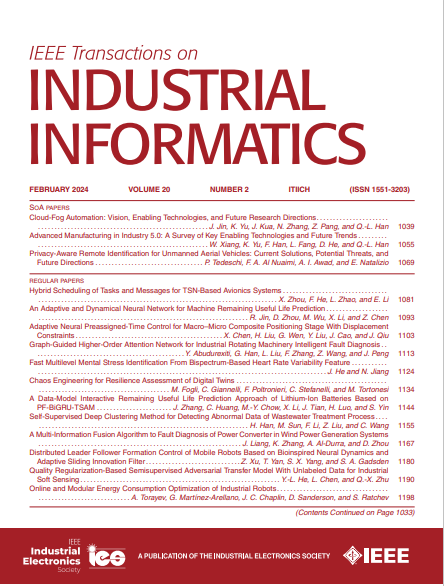基于q学习的可组合架构数据中心工作负载整合
IF 9.9
1区 计算机科学
Q1 AUTOMATION & CONTROL SYSTEMS
引用次数: 0
摘要
可组合或分解的体系结构已经成为解决数据中心中基于服务器的体系结构缺点的一种解决方案,例如资源效率低下和有限的可伸缩性。本文主要关注工作负载整合问题,我们的目标是将分布在许多未充分利用的(资源)节点上的工作负载整合到更少的节点上,从而实现最小化活动节点和工作负载迁移的两个目标,从而提高能源效率和资源利用率。为了解决这个问题,我们提出了一种基于q学习的强化学习方法,该方法产生近似的帕累托前沿,提供一组(近似)最优解,以满足两个目标的不同偏好。通过与整数线性规划、模拟退火、首次拟合和首次拟合递减算法的比较,验证了该方法的有效性。本文章由计算机程序翻译,如有差异,请以英文原文为准。
Q-Learning-Based Workload Consolidation for Data Centers With Composable Architecture
Composable or disaggregated architectures have emerged as a solution to address the drawbacks of server-based architectures in data centers, such as resource inefficiency and limited scalability. This article focuses on the workload consolidation problem where we aim to consolidate workloads that spread over many underutilized (resource) nodes onto fewer ones, with the two objectives of minimizing the number of active nodes and workload migrations, thereby enhancing energy efficiency and resource utilization. To address this problem, we propose a Q-learning-based reinforcement learning method that yields an approximate Pareto front, providing a set of (approximate) optimal solutions catering to different preferences for the two objectives. The performance of the proposed method is validated by comparing it to integer linear programming, simulated annealing, first fit, and first fit decreasing algorithms.
求助全文
通过发布文献求助,成功后即可免费获取论文全文。
去求助
来源期刊

IEEE Transactions on Industrial Informatics
工程技术-工程:工业
CiteScore
24.10
自引率
8.90%
发文量
1202
审稿时长
5.1 months
期刊介绍:
The IEEE Transactions on Industrial Informatics is a multidisciplinary journal dedicated to publishing technical papers that connect theory with practical applications of informatics in industrial settings. It focuses on the utilization of information in intelligent, distributed, and agile industrial automation and control systems. The scope includes topics such as knowledge-based and AI-enhanced automation, intelligent computer control systems, flexible and collaborative manufacturing, industrial informatics in software-defined vehicles and robotics, computer vision, industrial cyber-physical and industrial IoT systems, real-time and networked embedded systems, security in industrial processes, industrial communications, systems interoperability, and human-machine interaction.
 求助内容:
求助内容: 应助结果提醒方式:
应助结果提醒方式:


